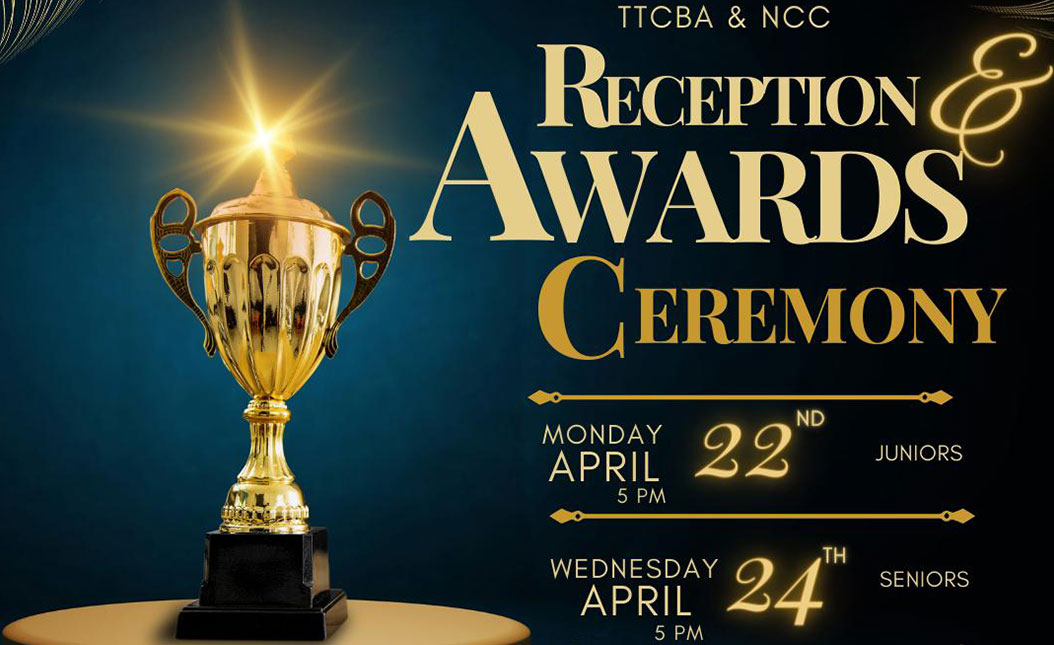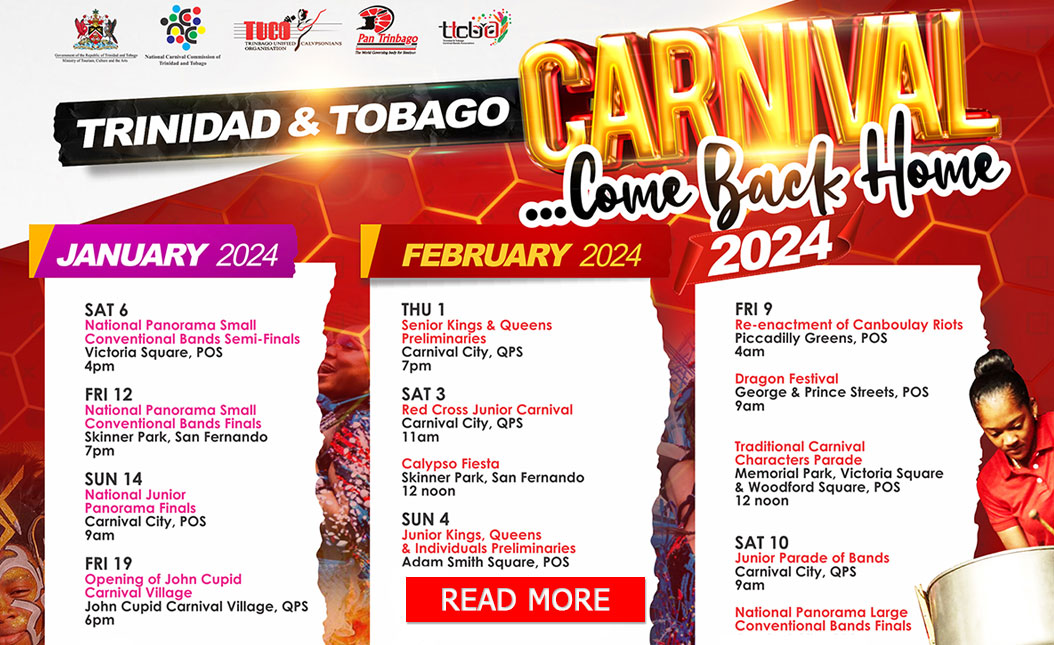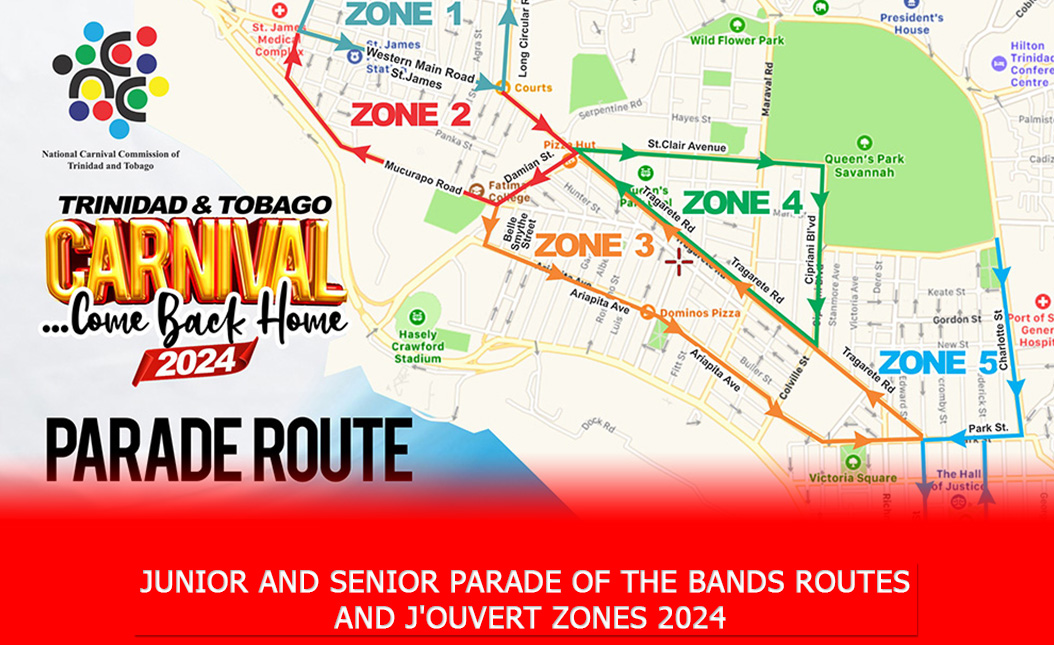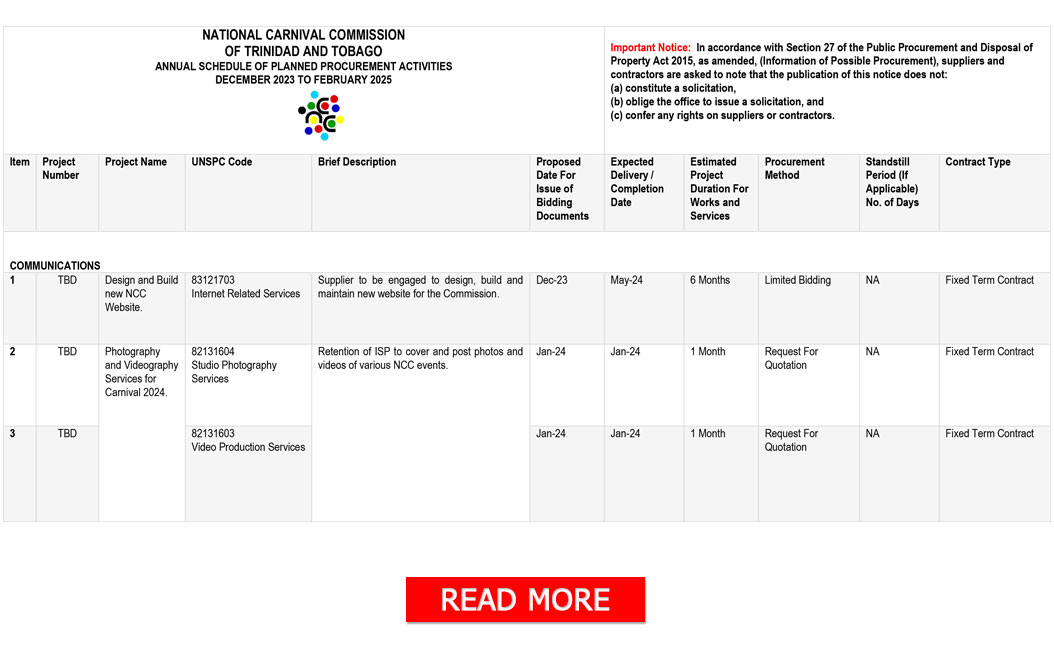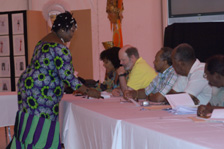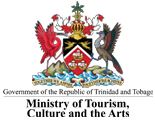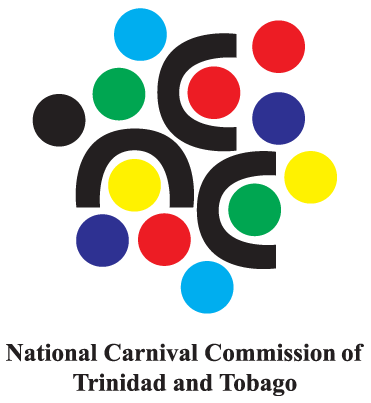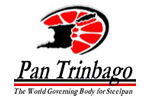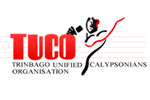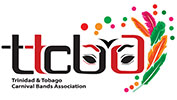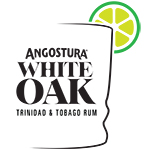Post Carnival Teach-IN
UTT - O'Meara Campus, Arima
23rd February 2007 (10.00 am – 3.00 pm)
The UTT Post Carnival Teach-IN was organized by the staff of the Carnival Institute of Trinidad and Tobago. This one-day symposium was hosted by the University of Trinidad and Tobago. It was attended by UTT staff and students. The entire event was recorded on film by Wendell Mitchell and photographed by Dr Dereck Gay. The Carnival Institute staff mounted a Carnival themed display under the UTT O'Meara campus's graduation tent. There were photography displays, Carnival costumes and drawings at this symposium.
- Mr. Noel Norton's Trinidad Carnival photographs form past to presents day Mas, which was loaned to Ronnie Joseph from the Carnival Institute –
- Scaled colour drawings of costumes and head-pieces from Peter Minshall's 2006 Carnival band The Sacred Heart.
- Production and presentation photographs as well as the actual costume of Paulette Alfred's individual Sailor costume for 2007
- Photographs of Brian Mac Farlane's 2006 King and Queen from his band The Story of Boyie and costumes.
- Rosalind Gabriel's Childrens Mas costumes
- Mt Hope Connection's Fancy Sailor costumes
Tribe's costumes from the band What lies beneath.
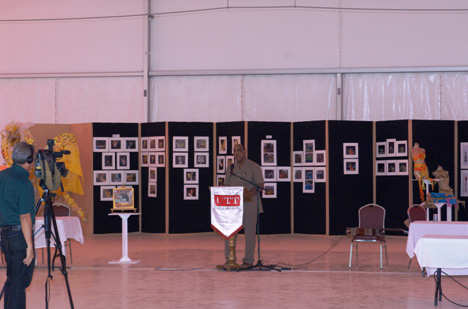
Professor Ken Julien opens the symposium
The symposium was opened AT 10.00 am and the attendees were welcomed by the UTT's Professor Emeritus Ken S. Julien T.C., Chairman of the Board of Governors. He added that
"The UTT mandate looked at filling the gap of the Arts and Culture; we hope to provide an umbrella for all creative work. This is therefore the first event of the Academy for the performing Arts, which Dr Bishop is developing programs from degrees to research, with all the necessary curricular and staffing. This event is saying that the UTT is playing an important role in the Performing Arts".
The Director of the Carnival Institute Dr Pat Bishop then gave a brief overview of some of the ideas of the Academy, within the context of design, technology and culture, and gave an overview of the day's proceedings.
"Re. the poor acoustics and echo in this UTT tent, that reverb shows very clearly, the connection between the arts and the sciences. That there is no microphone designed to capture the reality of steel band music".
"I am interested in the fact that Trinidad is blessed with so many cultures and the Amerindians … and next to race everybody will have to put mixed.
"We have a duty to teach everything from first principle".
"Any aspect of carnival comes out of some form of tradition"
Dr Bishop then spoke about Ray Funk's archive and that the UTT must make it available to us, locally. Also too she asked everyone to look at Noel Norton's carnival photographs during the course of the day. And to look at the engineering technologies in the costumes on display, as to how they stand up and how they are carried. She also made reference to the fact that all bands this year had a Tassa band - "Whether we like it or not, we are going to be put together, because the culture demands it"
At this point Dr Bishop said "In the beginning was the word", this was to introduce the next speaker Mr. Felix Edinborough. He was in full costume of the traditional carnival character, the Pierrot Grenade. He gave his ‘speech' to the audience by opening with "Bonjour"; then went on to spell various words in unconventional ways but with a slant toward the role of the Academy for the performing Arts. The last word spelt was "Literacy".
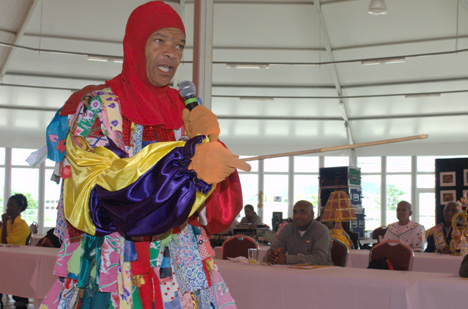
Felix Edinborough as the Pierrot Grenade
The next speaker that came on was from the University of Calabar in Nigeria, who spoke of puppetry as thought in the University's department of Theatre Arts. She begun by saying puppets originated in Nigeria. From here she presented a case study of the town Calabar and the ways in which puppets and Mas came about.
"the Mas we have in Nigeria indicated various families and societies". "Every leap year there is Carnival of the gods"
"I have not seen anything near Africa in this UTT hall"
"So I have brought the proper Mas for you to see"
"Men go on special diets to do acrobatic displays on the days of Carnival"
She left with us: necklaces and key-rings with wooden carvings in the form of a face.
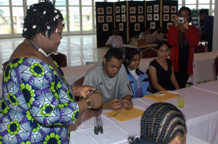 |
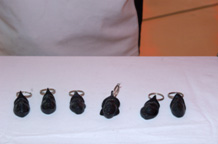 |
|
|
|
The next presenter was a physicist from Italy, who shared some ideas on their Carnival in Italy.
"The Carnival comes from far away, with beginnings from Greece or Africa: but it comes via the Romans and is unified. They had the "Bacchanalias" the party for the God Baucus, the god of wine and spirit". "Carnival is to be always spontaneous, and a way for people in Italy to mimic or criticize the ruling class"
"The Venice carnival of masks and elaborate costumes was opened with the flying of Doves"
"Then in north Italy on the coast, has a parade of Floats organized by groups of people. Also in a small village in North Italy, there is instead of masquerading, they put on medieval costumes and have an orange throwing fight, for about twelve hours".
"Carnival always was a reaction to something that was happening in the society". "This is my third Carnival in Trinidad and the Carnival here is very sincere"
Dr Bishop then introduced the next presenter who was the consummate costume maker Mr. Chow Lin On. She said that he was "The principle engineer of carnival" and too Peter Samuel who accompanied his was "the quintessential King of carnival". They both demonstrated design drawings and costume pieces of a chest piece and a fiber glass back pack. Mr. Chow Lin On has been working in carnival since1976, in the year of the band "Paradise Lost".
"I feel a costume must be an extension of the human form, if you have wheels you are a donkey cart, I am not about wheels". This year's costume "The Scorpion King" was looking at the Sarah, the blue people of the dessert, who traded in salt". The material to do justice to the Sarah was silk, to look like the sand shifting in the Sarah." The fiber glass back pack was made for Earl Thompson. Their presentation ended with a question and answer session.
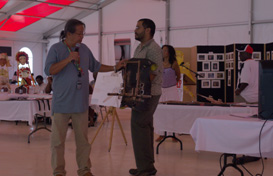 |
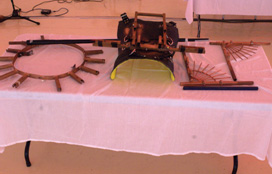 |
Dr Cowley from England then came on to present an insight into his research and publication of the ten (10) CDs complied in his West Indian Rhythm of 1938 – 1940 Calypso recordings. A copy of the box set owned by the Carnival Institute was on display at the symposium.
His works begun by looking at West Indian immigrants who came to England after the Second World War, who had in common, ‘the Carnivalesque'. He presented slides based on his two case studies of Jamaica and Trinidad Carnival that come out of newspaper clippings.
"In 1877 shows that the bands show a territorial characteristic and linguistic divide". Dr Cowley then played music from a senior Belmont band, which is on the CD compilation; it was "La Reine Maribone" which was a tribute to the Queen. He closed with a song by Lord Invader of 1939.
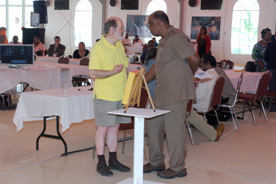 |
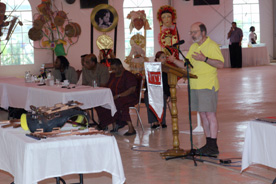 |
The first half of the day closed with Lunch, Later to be re convened with Calypso performances.
The calypso session begun with a rendition from the duet named ‘Regeneration" who sang two songs. Then "Brother Mudada" came on and sung a song from 1976, after which he sang a song from 1975, by which Mr. Ralph Dyette and Senor Gomez as fancy Sailors and Mr. Desmond Sobers as The Bookman danced in the background. The "Mighty Duke" then came on to sing two Calypsos. After this the three traditional characters came on to speak a little on their character and its history.
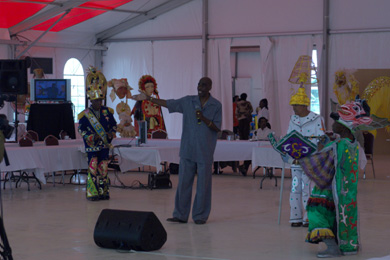
The mighty Duke with Sailors & Bookman
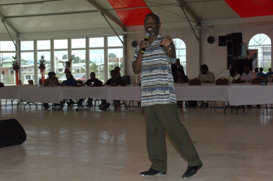 |
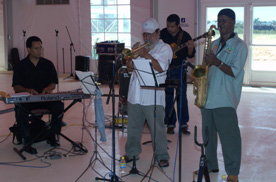 |
| Brother Mutada | Live band accompanying the Calypsonians |
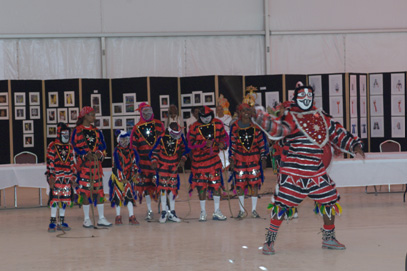
The family band of Jab-Jab performers demonstrate to the audience.
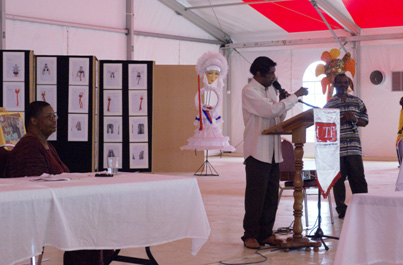
Steel Pan Icon Mr. Hugh Board shares a few words from Tripoli, begun in 1938, beginning with Klim pans, first sponsored steel pan band, "Hells Kitchen".
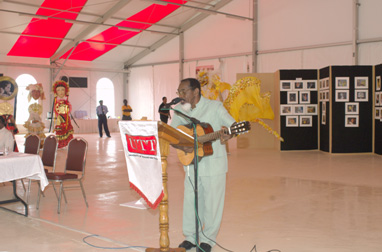
Dr. Dust or Calypsonian ‘Chalk dust' – Hollis Liverpool a fellow of the UTT
Dr Dust circulated a document on "The disappearing Mask". The went on to open his presentation by saying "This is a Carnival of Africans, The Africans who came to sing in the Caribbean, you also had a Mask in the calypso, Calypsonians tried to deceive the listeners, to hide their intentions form the elites."
He sang calypsos accompanied by hid guitar, as he explained the underlying meanings of the songs -
- In 1947 Mr. Huggins was caught having sex with his servant "Sly Mongoose".
- "Dorothy lost she maid"
- "Miss Mary Ann was sifting sand"
Dr Dust's presentation ended with a standing ovation by the students.
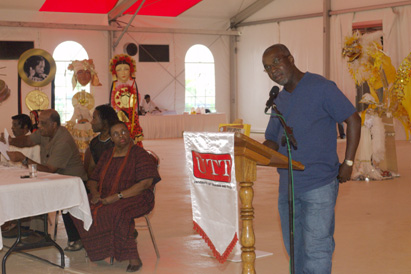
From here the UTT's Calypso Monarch presented a poem and sang his winning song "Who are we". Trevor Chase from Barbados then gave greetings from Barbados and added that Crop Over has been greatly influenced by Trinidad carnival, and asked that we preserve our carnival, and not let it be commodified. "If we don't keep guard of it, what we have, we will loose it".
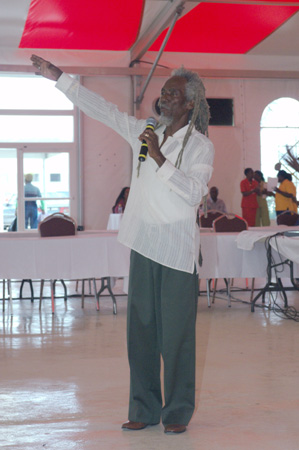
Brother Valentino singing “Life is a stage”
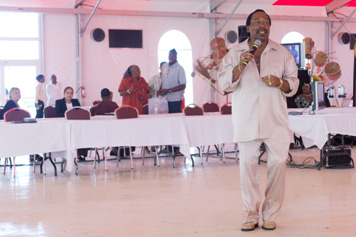
Calypsonian ‘Poser’ singing the1979 song “I in ah party”
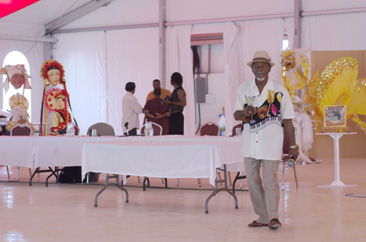
Lord Superior - “Yuh haven’t been to Carnival if yuh haven’t been to Trinidad Carnival”
The UTT Teach-In Carnival Symposium ended at 3:00 pm with Pat Bishop of the Carnival Institute giving the closing remarks. The Staff at the Carnival Institute removed the exhibits and had them returned to the office at the Normandie Hotel.








